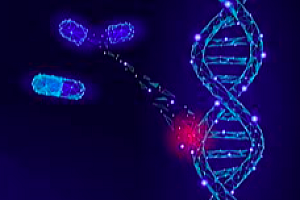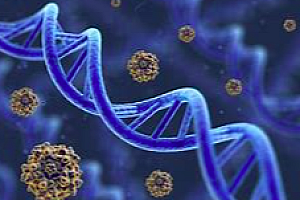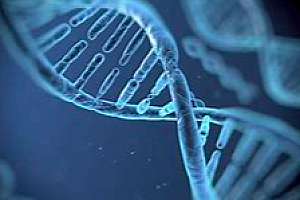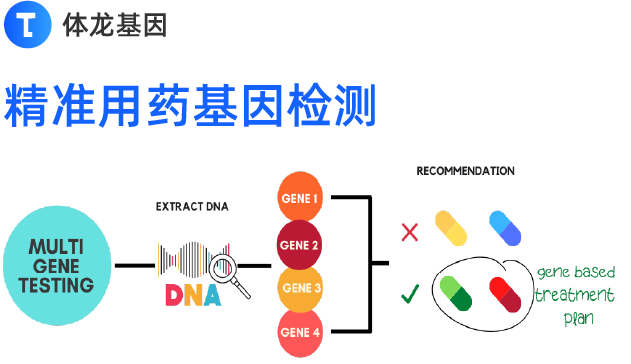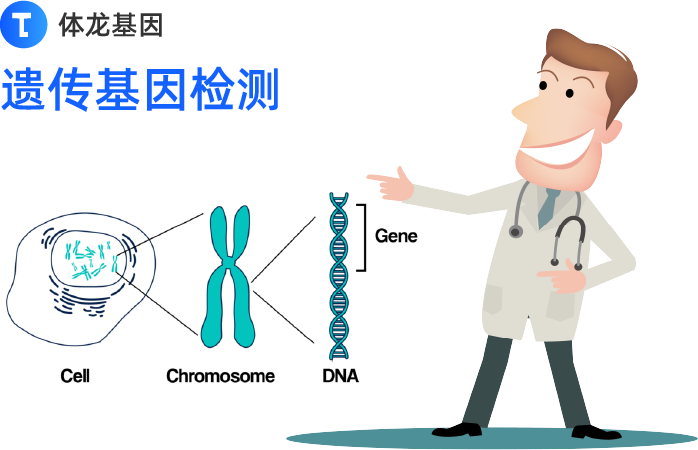前言:大多数甲状腺结节是良性的,临床的挑战是准确和快速鉴别结节癌。目前,采用细针穿刺(fine-needle aspiration, FNA)活检对甲状腺结节进行取样并对收集的细胞进行细胞学检查是最准确和最广泛使用的诊断方法,FNA在大多数情况下能够明确区分恶性和良性结节,但仍有约25%的结节不能通过FNA细胞学诊断[11-15]。国内将2017版Bethesda系统(TBSRTC)[16]作为甲状腺细胞病理诊断标准。“甲状腺癌诊疗规范2018版”中推荐Bethesda Ⅲ~Ⅳ类FNA无法确诊的甲状腺结节进行分子检测。此外,既往对FNA细胞学检查不确定的甲状腺结节的治疗常采用诊断性肺叶切除术或甲状腺切除术,该方法有一个明显的缺点,即许多患者要承受过度治疗的手术风险、手术并发症、成本和工作时间,最终证明是良性甲状腺结节。在过去的20年中,甲状腺癌的分子检测临床转化研究取得了重大进展,寻找合适的分子标志物来指导手术或观察FNA不确定甲状腺结节的患者,是近年来甲状腺结节研究的圣杯。本文将常见的分子检测标志物总结如下。(点击阅读原文,查看表格版汇总)作者:毕亭亭 毛瑞芳1.BRAF基因突变:BRAF是一种丝氨酸-苏氨酸激酶,经RAS结合激活后转运到细胞膜上,导致MAPK激酶等MAPK信号通路下游靶点的磷酸化和活化。在甲状腺癌中BRAF被突变类型有点突变、小缺失或插入和染色体重排,其中点突变BRAF V600 E(c.1799 T〉A;P.600 Val〉Glu)突变最为常见,占甲状腺癌中发现的所有BRAF突变的98%~99% [20,23-24] 。该突变在40 %~ 45%的PTC中被发现 [25] 。有学者发现在显示存在分化良好的乳头状癌区域的20%~40%的PDTC和30% ~40%的ATC中也存在该突变 [26-29] ,提示这种突变发生在肿瘤去分化的早期,同时由于该突变在FTC中比较罕见 [25,30] ,因此对甲状腺结节FNA来讲,BRAF突变是一个高度准确的癌症标志物,其恶性风险>99%,更重要的是在BRAF突变阳性的样品中,有40%的样品有不确定的FNA细胞,这表明BRAF在评估这些结节时的诊断价值较高 [31-32] 。 2.RAS基因突变:HRAS、KRAS和NRAS基因编码位于细胞膜内表面的高度相关的g蛋白,经MAPK、PI3K、AKT等信号通路传递细胞膜受体酪氨酸激酶和g蛋白偶联受体产生的信号。在甲状腺癌中,NRAS 61号密码子和HRAS 61号密码子突变最为常见。在10%~20%的PTC、40%~50%的FTC及20%~ 40%的PDTC和ATC中均发现RAS基因的突变,在带乳头状细胞核特征的非侵袭性滤泡型甲状腺肿瘤(non-invasive follicular thyroid neoplasm with papillary like nuclear features, NIFTP)的突变率为20%~40%,59%伴有RAS突变的病例为 NIFTP [33-39] ,但在20%~40%的良性滤泡性腺瘤中发现RAS,提示ras阳性滤泡腺瘤可能是ras阳性FTC和滤泡型乳头状癌(follicular variant papillary thyroid carcinoma, FVPTC)的前体,并且RAS突变可能使分化良好的甲状腺癌更易发生去分化和间变性转化 [40-43] 。研究结果表明,RAS合并其他基因改变,特别是TERT启动子、EIF1AX或 TP53突变时,预示高侵袭甲状腺癌的风险明显增高,在考虑治疗策略和手术范围时宜更为积极 [44] 。 3.RET或PTC重排:10%-20%的PTC可发生RET或PTC重排,并具有这种肿瘤的特异性[45-46],高达80%的暴露于意外辐射(主要是放射性碘)或治疗性辐射(主要是体外放射治疗)的PTC存在RET或PTC重排 [47-49] 。常见的有RET或PTC1和RET或PTC2两种形式的重排 [50-51] 。回顾性研究结果显示,RET或PTC 重排对Bethesda Ⅲ类结节恶性诊断率为 60%,提示RET或PTC重排是PTC诊断特异性较高的标志物。此外,50%的MTC伴有RET基因突变,RET基因胚系突变造成MAPK和PI3K通路持续激活,尤其是密码子918位点突变,约98%的多发性内分泌腺瘤病2A型(multiple endocrine neoplasia type 2A, MEN2A)患者存在RET基因胚系突变 [52] 。约88%的家族性MTC含有RET基因的突变,约6%的散发性MTC含有胚系的RET基因突变,NCCN指南中指出对于遗传性MTC需要进行 RET基因的检测 [10] 。 4.TERT基因突变:TERT突变在DTC中的发生率为10%~15%,在 PDTC和ATC中为40%~45%,而在良性结节中比较罕见 [53] 。Liu 等在一项大型中国人群PTC和FTC队列研究中发现,TERT启动子突变常见,特别是在FTC和BRAF突变阳性的PTC中,并且与临床病理特征相关。与BRAF突变不同,TERT启动子突变与高碘摄入无关,但与患者年龄较大、肿瘤体积较大、甲状腺外侵及晚期PTC相关。同时存在TERT和BRAF突变与临床病理侵袭性更常见,提示TERT突变 BRAF突变共存时,PTC侵袭性及复发风险显著增加,因此TERT 基因是甲状腺癌诊断和侵袭性评估重要的肿瘤标志 [54-55] 。 5.TP53基因突变:研究发现TP53的突变主要存在于71%的ATC及25%低分化的PTC中,在有分化程度不同的2个区域(分化程度高的区域和分化程度低)的ATC中发现TP53突变仅发生在分化程度低的区域,这表明TP53基因的突变与低分化组织学类型的甲状腺肿瘤,如ATC和PDTC高度相关,因此认为其在PTC由分化型向未分化型转化的过程中起关键作用 [29,56] ,这提示TP53的失活可能赋予这些肿瘤的侵袭性,并进一步失去分化功能 [57] 。 6.PAX8/PPARγ重排:PAX8/PPARγ重排在FTC中是一种很常见的突变,发生率为30%~35% [58-60] 。研究结果表明,约2 %~13%的滤泡腺瘤和1%~ 5%的FVPTC中也发现了这种重排 [61-62] 。PAX8/ PPARγ重排和RAS点突变在同一肿瘤中很少并行发生,提示其在FTC发展过程中代表不同的发病途径 [59,63] 。 7.mRNA和miRNA表达:在乳头状癌和其他类型的甲状腺癌中观察到不同的mRNA表达谱 [64] 。尽管在不同的研究中特定的基因表达谱的列表有很大差异,但已重复发现了一些共通的基因在mRNA水平上的失调,包括MET、TPO、TIMP1、DPP4、LGALS3、KRT19、HMGA2、PLAG1 [ 65-72 ] 。mRNA和miRNA(MicroRNA)标志物的表达也可用于甲状腺FNA样本的诊断评估。研究结果表明,利用NRAS突变状态结合TIMP1表达分析,一项评估综合临床因素和候选诊断标志物以提高甲状腺细针穿刺活检准确性的前瞻性研究测试了在甲状腺FNA样本中联合检测常见体细胞突变 (BRAF V600E、NRAS、KRAS、RET/PTC1、RET/PTC3、NTRK1)和6个候选基因(ANGPT2、ECM1、EGFR、EFNB2、TIMP1、TMPRSS4)的表达水平,通过对341个甲状腺FNA样本应用商业开发的算法,区分甲状腺良恶性肿瘤的总体准确率为91%,FNA不确定组67%,FNA可疑组77%,可进一步提高FNA细胞学诊断的准确性 [73] 。Thomas等 [74] 一项大型前瞻性数据的研究结果表明,miR-21表达的增加与高侵袭性PTC(高细胞变异)相关,可能是其发病机制中的一个关键事件。Labourier 等 [75] 的大型数据研究结果提示,平台检测DNA、mRNA、miRNA可准确划分甲状腺结节的良恶性,提高分子细胞学的诊断率,进一步提高AUS/ FLU或FN/SFN细胞学对良性结节的术前风险管理。 8.其他分子标志物:其他的分子标志物,如PI3K信号通路的成员,如PTEN、PIK3CA和AKT1也有少量报道 [23] 。在未分化和低分化癌中存在10%~ 20%PIK3CA突变、5%~15%的PTEN突变和5%~10%的AKT1突变 [76-80] 。另一个在ATC中经常突变的基因是CTNNB1,60%的ATC中可发现该基因3号外显子点突变,这些突变也发生在低分化甲状腺癌中,但发生率较低 [81-82] 。一项包含多个热点突变检测的高通量测序研究发现,在ATC中CDKN2A也是常见的突变类型,其中最常见的是E88G错义突变,在8/118(7%)的ATC样本中检测到 [83] 。研究发现除了驱动突变,还有其他基因(CHEK2、ATM)和一系列功能相关基因的突变,可能导致甲状腺结节分化缺失和肿瘤进展 [74] 。此外,还有研究结果表明EIF1AX突变是与RAS在晚期甲状腺癌中的强合作事件。在一项对246 例甲状腺肿瘤患者的研究发现有 26 例 (11%) 含有EIF1AX突变,其中 25 例与RAS突变相关 [84] 。 除了上文提及的分子标志物,约30% ~ 40%的分化型甲状腺癌没有检测到任何这些已知基因突变,使得这些标志物的敏感度低得不可接受 [23] 。在一些研究中,某些基因突变也会发生在良性甲状腺结节中,发生率为6%~13%,可能会影响这些基因突变检测的诊断特异性 [85-87] 。 参考文献:[11] Gharib H. Changing trends in thyroid practice: understanding nodular thyroid disease[J]. Endocr. Pract, 2004,10:31-39 .DOI: 10.4158/EP.10.1.31.[12] Greaves TS,et al. Follicular lesions of thyroid: a 5year fine-needle aspiration experience[J]. Cancer, 2000,90:335–341.[13] Sclabas GM,et al. Fine-needle aspiration of the thyroid and correlation with histopathology in a contemporary series of 240 patients[J]. Am J Surg, 2003,186: 702–709.DOI: 10.1016/j.amjsurg.2003.08.015.[14] Cooper DS,et al. Management guidelines for patients with thyroid nodules and differentiated thyroid cancer[J]. Thyroid, 2006,16: 109– 142.DOI: 10.1089/thy.2006.16.109.[15] Yassa L,et al. Long-term assessment of a multidisciplinary approach to thyroid nodule diagnostic evaluation[J]. Cancer, 2007,111:508–516.DOI: 10.1002/cncr.23116.[16]Cibas ES, Ali SZ. The 2017 Bethesda system for reporting thyroid cytopathology[J]. Thyroid, 2017,27: 1341-1346 .DOI: 10.1089/thy.2017.0500.[17] Wang CC, Friedman L, Kennedy GC, et al. A large multicenter correlation study of thyroid nodule cytopathology and histopathology[J]. Thyroid,2011, 21:243–251. DOI: 10.1089/thy.2010.0243.[18] Baloch ZW, LiVolsi VA, Asa SL, et al. Diagnostic terminology and morphologic criteria for cytologic diagnosis of thyroid lesions: a synopsis of the National Cancer Institute Thyroid Fine Needle Aspiration State of the Science Conference[J]. Diagn Cytopathol, 2008,36:425–437.DOI: 10.1002/dc.20830.[19] Adeniran A J, et al. Correlation between genetic alterations and microscopic features, clinical manifestations, and prognostic characteristics of thyroid papillary carcinomas[J]. Am J Surg Pathol, 2006,10:216-222.DOI: 10.1097/01.pas.0000176432.73455.1b.[20 ] Kimura E T, et al. High prevalence of BRAF mutations in thyroid cancer: genetic evidence for constitutive activation of the RET/PTCRASBRAF signaling pathway in papillary thyroid carcinoma[J]. Cancer Res, 2003,63:1454-1457.[21] Soares P,et al. BRAF mutations and RET/PTC rearrangements are alternative events in the etiopathogenesis of PTC[J]. Oncogene, 2003,22:4578–4580.DOI: 10.1038/sj.onc.1206706.[22] Frattini M, et al. Alternative mutations of BRAF, RET and NTRK1 are associated with similar but distinct gene expression patterns in papillary thyroid cancer[J]. Oncogene , 2004,23:7436-7440.DOI: .10.1038/sj.onc.1207980.[23] Xing M, Haugen BR, Schlumberger M. Progress in molecularbased management of differentiated thyroid cancer[J]. Lancet, 2013,381(9871): 1058-1069.DOI: 10.1016/S0140-6736(13)60109-9.[24] Cohen Y,et al. BRAF mutation in papillary thyroid carcinoma[J]. J Natl Cancer Inst, 2003,95:625-627.DOI: 10.1093/jnci/95.8.625.[25] Xing, M. BRAF mutation in thyroid cancer. Endocr Relat[J]. Cancer, 2005,12:245–262.DOI: 10.1677/erc.1.0978.[26] Namba H,et al. Clinical implication of hot spot BRAF mutation, V599E, in papillary thyroid cancers[J]. J Clin Endocrinol Metab, 2003,88: 4393–4397.DOI: 10.1210/jc.2003-030305.[27] Nikiforova MN, et al. BRAF mutations in thyroid tumors are restricted to papillary carcinomas and anaplastic or poorly differentiated carcinomas arising from papillary carcinomas[J]. J Clin Endocrinol Metab, 2003,88:5399–5404.DOI: 10.1210/jc.2003-030838.[28] Begum S,et al. BRAF mutations in anaplastic thyroid carcinoma: implications for tumor origin, diagnosis and treatment[J] . Mod Pathol, 2004,17:1359-1363.DOI: 10.1038/modpathol.3800198.[29] Ricarte-Filho JC, et al. Mutational profile of advanced primary and metastatic radioactive iodine-refractory thyroid cancers reveals distinct pathogenetic roles for BRAF, PIK3CA, and AKT1[J] . Cancer Res, 2009,69:4885-4893.DOI: 10.1158/0008-5472.CAN-09-0727.[30] Adeniran AJ,et al. Correlation between genetic alterations and microscopic features, clinical manifestations, and prognostic characteristics of thyroid papillary carcinomas[J] . Am J Surg Pathol, 2006,30,:216-222.DOI: 10.1097/01.pas.0000176432.73455.1b.[31] Kim SK,et al. Surgical results of thyroid nodules according to a management guideline based on the BRAF(V600E) mutation status[J] . J Clin Endocrinol Metab,2011,96:658-664 . DOI: 10.1210/jc.2010-1082.[32] Kim SW,et al. BRAFV600E mutation analysis in fine-needle aspiration cytology specimens for evaluation of thyroid nodule: a large series in a BRAFV600E-prevalent population[J] . J Clin Endocrinol Metab, 2010,95:3693-3700.DOI: 10.1210/jc.2009-2795.[33] Suarez H G, et al. Presence of mutations in all three ras genes in human thyroid tumors[J] . Oncogene, 1990,5:565-570 .[34] Esapa, CT, Johnson SJ, Kendall-Taylor P,et al. Prevalence of Ras mutations in thyroid neoplasia[J] . Clin Endocrinol (Oxf), 1999,50:529-535. DOI: 10.1046/j.1365-2265.1999.00704.x.[35] Motoi N,et al. Role of ras mutation in the progression of thyroid carcinoma of follicular epithelial origin[J] . Pathol Res Pract, 2000,196:1-7. DOI: 10.1016/S0344-0338(00)80015-1.[36] Manenti G, Pilotti S, Re FC, et al. Selective activation of ras oncogenes in follicular and undifferentiated thyroid carcinomas[J] . Eur J Cancer, 1994,30A:987-993. DOI: 10.1016/0959-8049(94)90130-9.[37] Namba H, Rubin S.A,Fagin JA. Point mutations of ras oncogenes are an early event in thyroid tumorigenesis[J] . Mol Endocrinol, 1990,4:1474-1479. DOI: 10.1210/mend-4-10-1474.[38] Karga H,et al. Ras oncogene mutations in benign and malignant thyroid neoplasms[J] . J Clin Endocrinol Metab, 1991,73:832-836.DOI: 10.1210/jcem-73-4-832.[39] Ezzat S,et al. Prevalence of activating ras mutations in morphologically characterized thyroid nodules[J] . Thyroid, 1996,6, 409-416.DOI: 10.1089/thy.1996.6.409.[40] Fagin JA. Minireview: branded from the startdistinct oncogenic initiating events may determine tumor fate in the thyroid[J] . Mol Endocrinol, 2002,16:903-911. DOI: 10.1210/mend.16.5.0838.[41] Saavedra HI,et al. The RAS oncogene induces genomic instability in thyroid PCCL3 cells via the MAPK pathway[J] . Oncogene, 2000,19:3948-3954. DOI: 10.1038/sj.onc.1203723.[42] Basolo F, et al. Nras mutation in poorly differentiated thyroid carcinomas: correlation with bonemetastases and inverse correlation to thyroglobulin expression[J] . Thyroid, 2000,10:19-23. DOI: 10.1089/thy.2000.10.19.[43] Garcia-Rostan, G. et al. Ras mutations are associated with aggressive tumor phenotypes and poor prognosis in thyroid cancer[J] . J Clin Oncol, 2003,21:3226-3235.DOI: 10.1200/JCO. 2003.10.130.[44] Guan H,et al. Utilities of RAS Mutations in Preoperative Fine Needle Biopsies for Decision Making for Thyroid Nodule Management: Results from a Single-Center Prospective Cohort[J] .Thyroid, 2020,30(4):536-547.DOI: 10.1089/thy.2019.0116.[45] Santoro M,et al. Ret oncogene activation in human thyroid neoplasms is restricted to the papillary cancer subtype[J] . J Clin Invest, 1992,89:1517-1522.DOI: 10.1172/JCI115743.[46] Zhu Z, Ciampi R, Nikiforova MN, et al. Prevalence of RET/PTC rearrangements in thyroid papillary carcinomas: effects of the detection methods and genetic heterogeneity[J] . J Clin Endocrinol Metab, 2006,91: 3603-3610.DOI: 10.1210/jc.2006-1006.[47] Rabes HM,et al. Pattern of radiation-induced RET and NTRK1 rearrangements in 191 postChernobyl papillary thyroid carcinomas: biological, phenotypic, and clinical implications[J] . Clin Cancer Res, 2000,6:1093-1103.[48] Nikiforov YE, Rowland JM, Bove KE, et al. Distinct pattern of ret oncogene rearrangements in morphological variants of radiation-induced and sporadic thyroidpapillary carcinomas in children[J] . Cancer Res, 1997,57:1690-1694.[49] Bounacer A,et al. High prevalence of activating ret proto-oncogene rearrangements, in thyroid tumors from patients who had received external radiation[J]. Oncogene, 1997,15:1263-1273.DOI: 10.1038/sj.onc.1200206.[50] Grieco M,et al. PTC is a novel rearranged form of the ret proto-oncogene and is frequently detected in vivo in human thyroid papillary carcinomas[J]. Cell, 1990,60:557-563.DOI: 10.1016/0092-8674(90)90659-3.[51] Santoro M,et al. Molecular characterization of RET/PTC3: a novel rearranged version of the RET proto-oncogene in a human thyroid papillary carcinoma[J]. Oncogene, 1994,9:509-516.[52] 广东省医学教育协会甲状腺专业委员会. 甲状腺癌基因检测与临床应用广东专家共识(2020 版)[J].中华普通外科学文献(电子版), 2020, 14(3):161-168.DOI: 10.3877/cma.j. issn.1674-0793.2020.03.001.[53] Mayson SE, Haugen BR. Molecular diagnostic evaluation of thyroid nodules[J] . Endocrinol Metab Clin North Am, 2019,48(1): 85-97.DOI: 10.1016/j.ecl.2018.10.004.[54] Xiaoli L, et al. TERT promoter mutations and their association with BRAF V600E mutation and aggressive clinicopathological characteristics of thyroid cancer[J]. J Clin Endocrinol Metab, 2014,99(6):E1130-6.DOI: 10.1210/jc.2013-4048.[55] Liu R, Xing M. TERT promoter mutations in thyroid cancer[J] . Endocr Relat Cancer, 2016, 23: R143-R155.DOI: 10.1530/ERC-15-0533.[56] Donghi R, Longoni A, Pilotti S, et al. Gene p53 mutations are restricted to poorly differentiated and undifferentiated carcinomas of the thyroid gland[J]. J Clin Invest, 1993,91:1753-1760.DOI: 10.1172/JCI116385.[57] Fagin JA, Matsuo K, Karmakar A, et al. High prevalence of mutations of the p53 gene in poorly differentiated human thyroid carcinomas[J]. J Clin Invest, 1993,91:179-184.DOI: 10.1172/JCI116168.[58] French CA,et al. Genetic and biological subgroups of low-stage follicular thyroid cancer[J]. Am J Pathol,2003,162:1053-1060. DOI: 10.1016/S0002-9440(10)63902-8.[59] Nikiforova MN, et al. RAS point mutations and PAX8-PPAR gamma rearrangement in thyroid tumors: evidence for distinct molecular pathways in thyroid follicular carcinoma[J]. J Clin Endocrinol Metab, 2003,88:2318-2326. DOI: 10.1210/jc.2002-021907.[60] Dwight T,et al. Involvement of the PAX8/ peroxisome proliferator-activated receptor gamma rearrangement in follicular thyroid tumors[J]. JClin Endocrinol Metab, 2003,88:4440-4445.DOI: 10.1210/jc.2002-021690.[61] Nikiforova MN, Biddinger PW, Caudill CM, et al. PAX8-PPARgamma rearrangement in thyroid tumors: RTPCR and immunohistochemical analyses[J]. Am J Surg Pathol, 2002,26:1016-1023. DOI: 10.1097/00000478-200208000-00006.[62] Marques AR,et al. Expression of PAX8-PPAR gamma 1 rearrangements in both follicular thyroid carcinomas and adenomas[J]. J Clin Endocrinol Metab, 2002,87:3947-3952. DOI: 10.1210/jcem.87.8.8756.[63] Castro P,et al. PAX8-PPARgamma rearrangement is frequently detected in the follicular variant of papillary thyroid carcinoma[J]. J Clin Endocrinol Metab, 2006,91:213-220.DOI: 10.1210/jc.2005-1336.[64] Frattini M,et al. Alternative mutations of BRAF, RET and NTRK1 are associated with similar but distinct gene expression patterns in papillary thyroid cancer[J]. Oncogene, 2004,23:7436-7440.DOI: 10.1038/sj.onc.1207980.[65] Chevillard S,et al. Gene expression profiling of differentiated thyroid neoplasms: diagnostic and clinical implications[J]. Clin Cancer Res, 2004,10:6586-6597.DOI: 10.1158/1078-0432.CCR-04-0053.[66]Huang Y,et al. Gene expression in papillary thyroid carcinoma reveals highly consistent profiles[J]. Proc Natl Acad Sci U S A, 2001,98:15044- 15049.DOI: 10.1073/pnas.251547398.[67] Mazzanti C,et al. Using gene expression profiling to differentiate benign versus malignant thyroid tumors[J]. Cancer Res, 2004,64:2898-2903. DOI: 10.1158/0008-5472.can-03-3811.[68] Lubitz CC,Fahey TJ 3rd. The differentiation of benign and malignant thyroid nodules[J]. Adv Surg, 2005,39:355-377. DOI: 10.1016/j.yasu.2005.04.009.[69] Prasad NB, et al. Identification of genes differentially expressed in benign versus malignant thyroid tumors[J]. Clin Cancer Res, 2008,14:3327- 3337.DOI: 10.1158/1078-0432.CCR-07-4495.[70] Belge G,et al. Upregulation of HMGA2 in thyroid carcinomas: a novel molecular marker to distinguish between benign and malignant follicular neoplasias[J]. Genes Chromosomes Cancer, 2008, 47:656-663. DOI: 10.1002/gcc.20505.[71] Chiappetta G,et al. HMGA2 mRNA expression correlates with the malignant phenotype in human thyroid neoplasias[J]. Eur J Cancer, 2008,44:1015-1021. DOI: 10.1016/j.ejca.2008.02.039.[72] Lappinga PJ,et al. HMGA2 gene expression analysis performed on cytologic smears to distinguish benign from malignant thyroid nodules[J]. Cancer Cytopathol, 2010,118:287-297. DOI: 10.1002/cncy.20095.[73] Mathur A,et al. A prospective study evaluating the accuracy of using combined clinical factors and candidate diagnostic markers to refine the accuracy of thyroid fine needle aspiration biopsy[J]. Surgery, 2010,148:1170-1176.DOI: 10.1016/j.surg.2010.09.025.[74] Thomas J,Giordano,et al. Integrated Genomic Characterization of Papillary Thyroid Carcinoma[J]. Cell, 2014,159(3): 676-690.DOI: 10.1016/j.cell.2014.09.050.[75] Labourier E, Shifrin A, Busseniers AE, et al. Molecular Testing for miRNA, mRNA, and DNA on Fine-Needle Aspiration Improves the Preoperative Diagnosis of Thyroid Nodules With Indeterminate Cytology[J].J Clin Endocrinol Metab, 2015,100(7):2743-50.DOI: 10.1210/jc.2015- 1158.[76] Ricarte-Filho JC,et al. Mutational profile of advanced primary and metastatic radioactive iodine-refractory thyroid cancers reveals distinct pathogenetic roles for BRAF, PIK3CA, and AKT1[J]. Cancer Res, 2009,69:4885-4893.DOI: 10.1158/0008-5472.CAN-09-0727.[77] García-Rostán G,et al. Mutation of the PIK3CA gene in anaplastic thyroid cancer[J]. Cancer Res, 2005,65:10199-10207. DOI: 10.1158/0008- 5472.CAN-04-4259.[78] Santarpia L, El-Naggar AK, Cote GJ, et al. Phosphatidylinositol 3kinase/akt and ras/rafmitogenactivated protein kinase pathway mutations in anaplastic thyroid cancer[J]. J Clin Endocrinol Metab, 2008,93:278-284. DOI: 10.1210/jc.2007-1076.[79] Hou P,et al. Genetic alterations and their relationship in the phosphatidylinositol 3kinase/ Akt pathway in thyroid cancer[J]. Clin Cancer Res, 2007,13:1161-1170. DOI: 10.1158/1078- 0432.CCR-06-1125.[80] Dahia PL,et al. Somatic deletions and mutations in the Cowden disease gene, PTEN, in sporadic thyroid tumors[J]. Cancer Res, 1997,57(21):4710-4713.[81] Garcia-Rostan G,et al. Beta-catenin dysregulation in thyroid neoplasms: down-regulation, aberrant nuclear expression, and CTNNB1 exon 3 mutations are markers for aggressive tumor phenotypes and poor prognosis[J]. Am J Pathol, 2001,158:987-996.DOI: 10.1016/s0002- 9440(10)64045-x.[82] Garcia-Rostan G,et al. Frequent mutation and nuclear localization of beta-catenin in anaplastic thyroid carcinoma[J]. Cancer Res, 1999,59:1811-1815.[83] Tiedje V, et al. NGS based identification of mutational hotspots for targeted therapy in anaplastic thyroid carcinoma[J]. Oncotarget, 2017,8(26):42613-42620.DOI: 10.18632/oncotarget. 17300.[84] Krishnamoorthy GP,et al.EIF1AX and RAS Mutations Cooperate to Drive Thyroid Tumorigenesis through ATF4 and c-MYC[J]. Cancer Discov, 2019,9(2):264-281.DOI: 10.1158/2159-8290.CD-18-0606.[85] Moses W, Weng J, Sansano I, et al. Molecular testing for somatic mutations improves the accuracy of thyroid fine-needle aspiration biopsy[J]. World J Surg, 2010,34:2589-2594.DOI: 10.1007/s00268-010-0720-0.[86] Cantara S, Capezzone M, Marchisotta S, et al. Impact of proto-oncogene mutation detection in cytological specimens from thyroid nodules improves the diagnostic accuracy of cytology[J]. J Clin Endocrinol Metab, 2010,95:1365-1369.DOI: 10.1210/jc.2009-2103.[87] Guerra A, Sapio MR, Marotta V, et al. Prevalence of RET/PTC rearrangement in benign and malignant thyroid nodules and its clinical application[J]. Endocr J, 2011,58:31-38.DOI: 10.1507/endocrj.k10e-260❖-End-题图 | veer.com
(责任编辑:dawenwu)
甲状腺癌基因检测常见的分子标志物|专论
431




